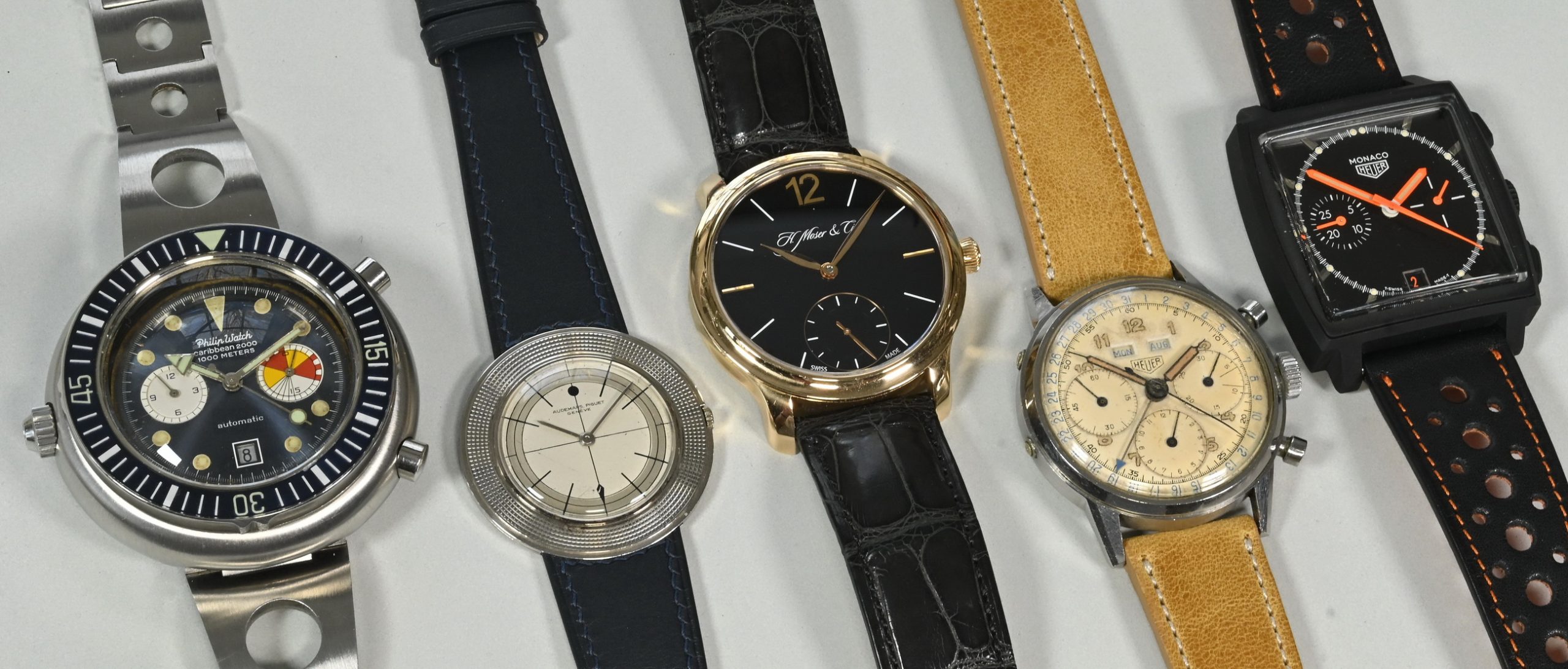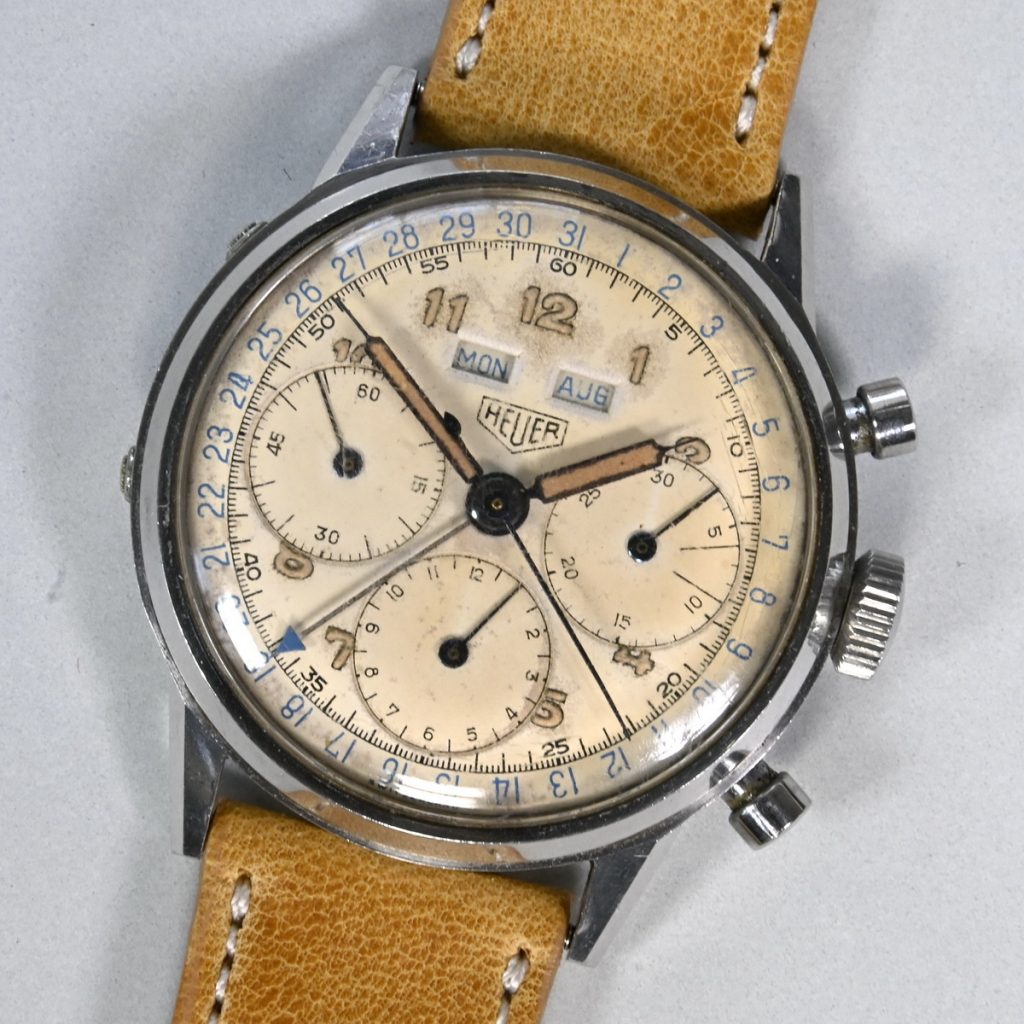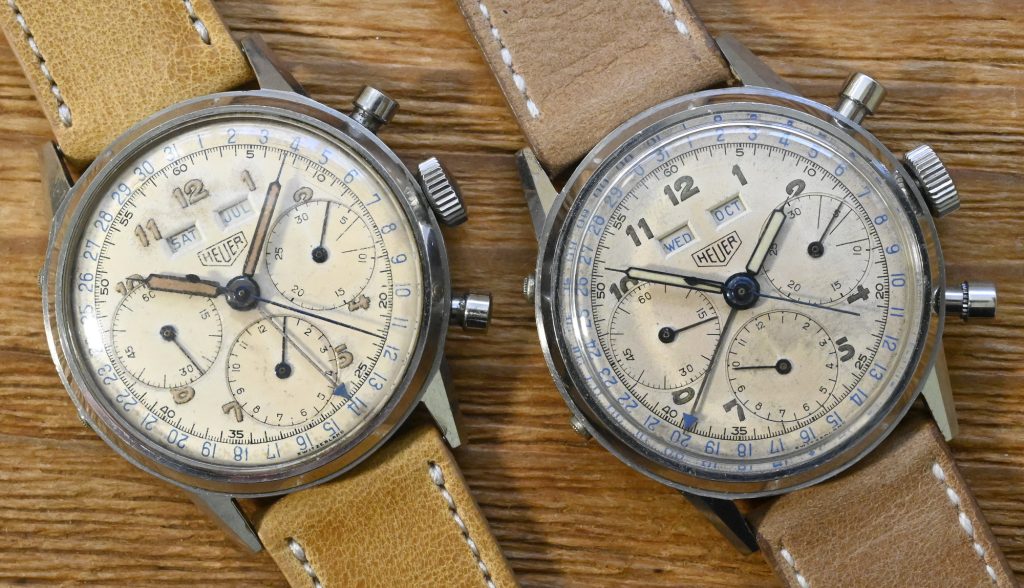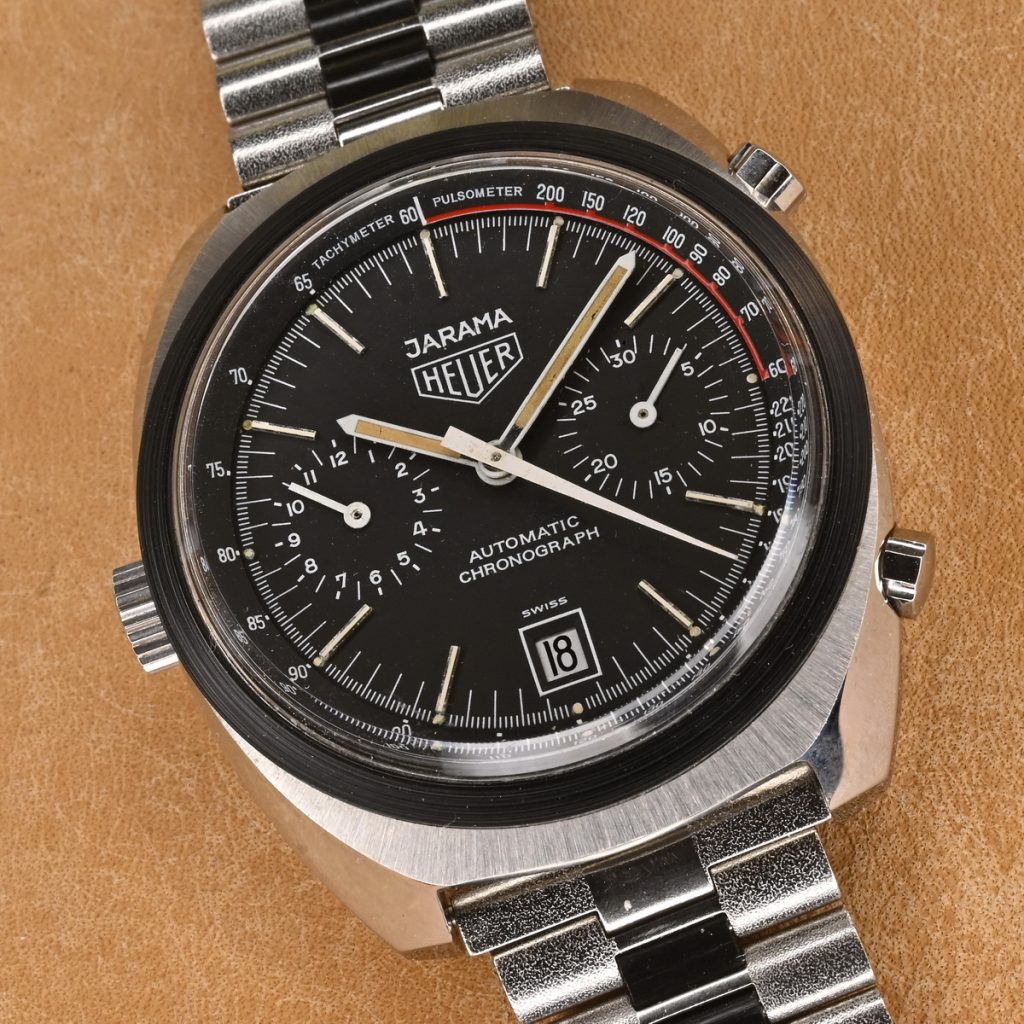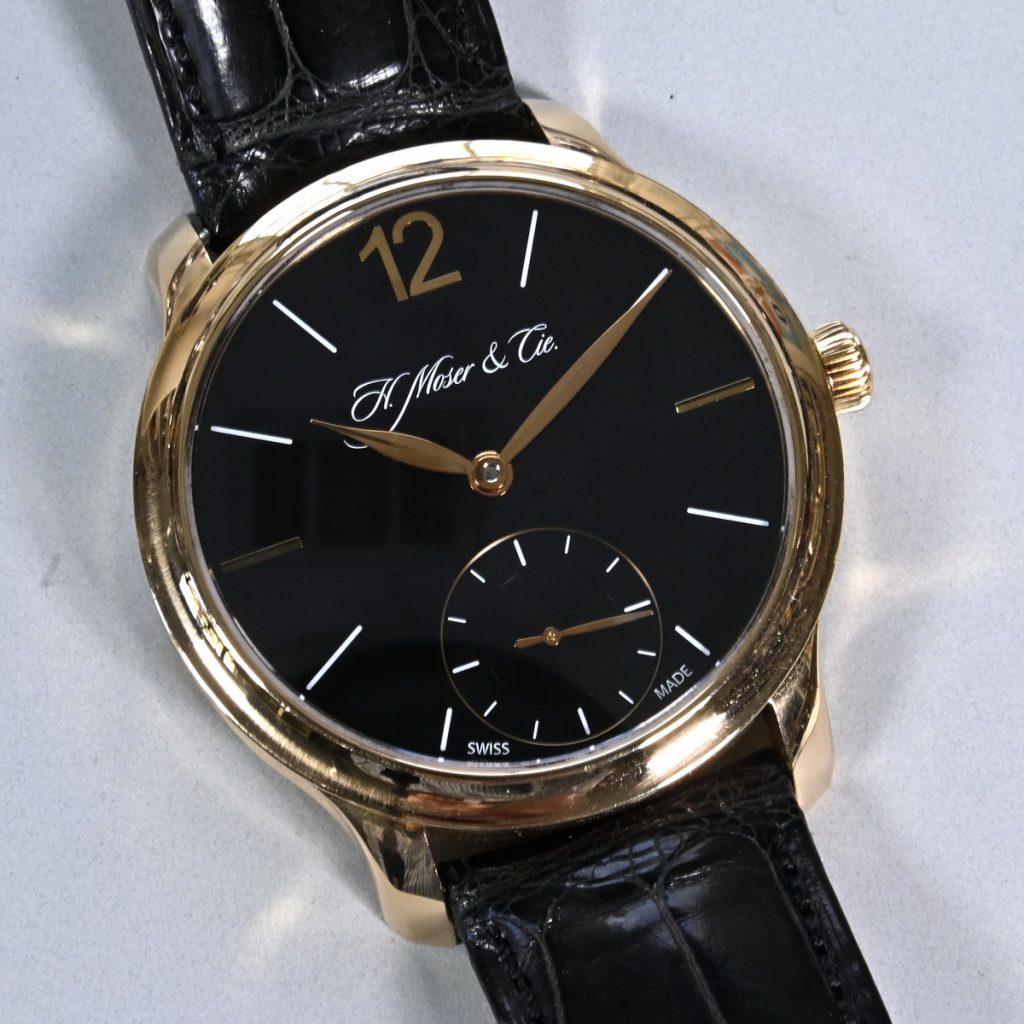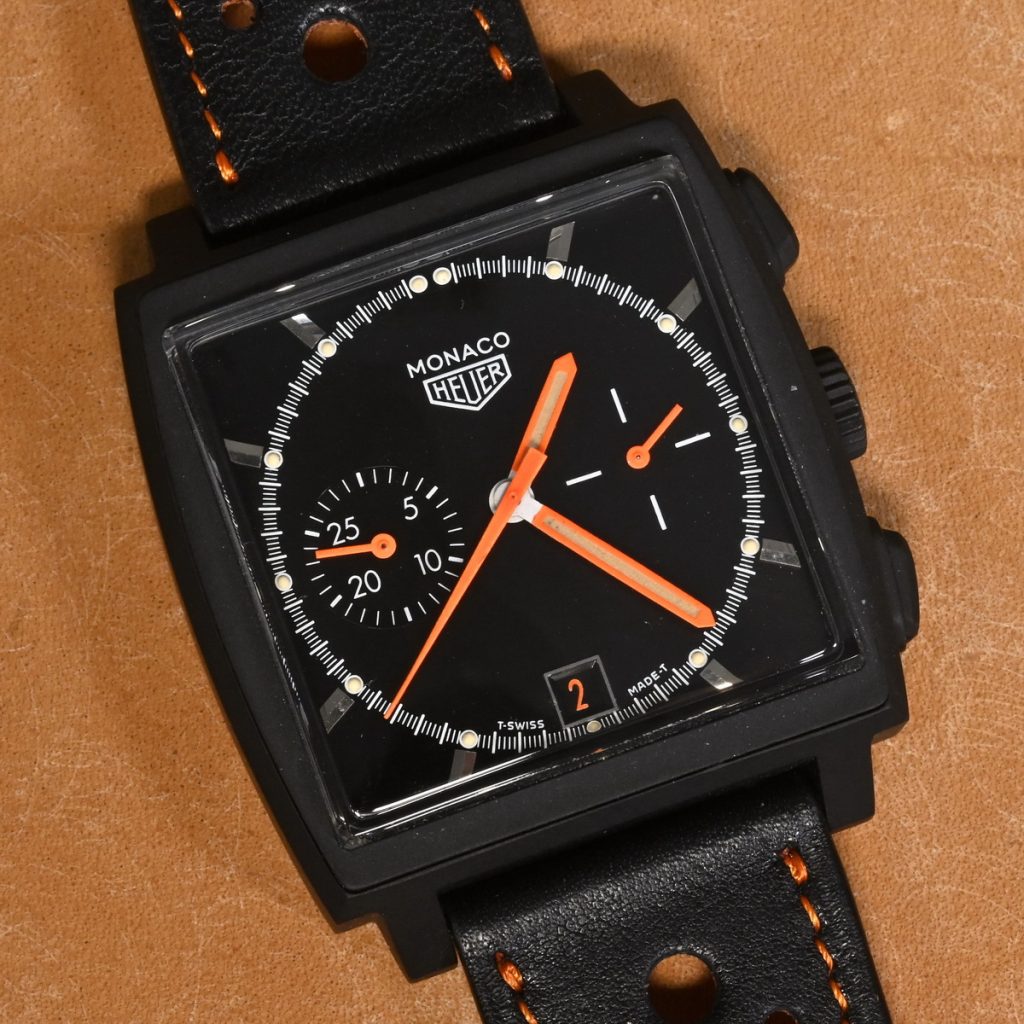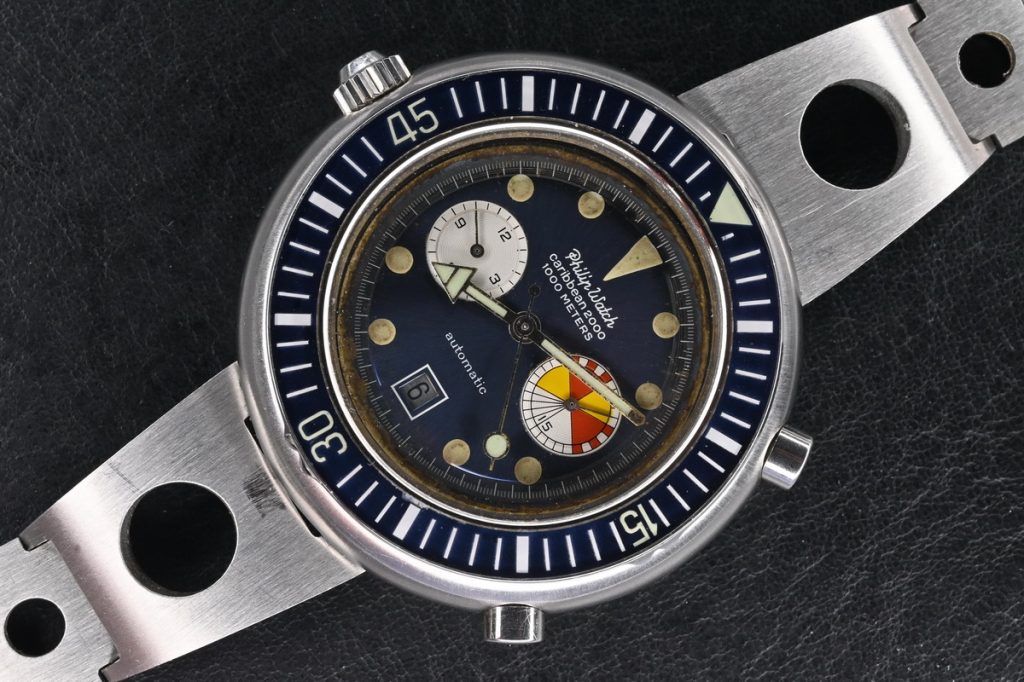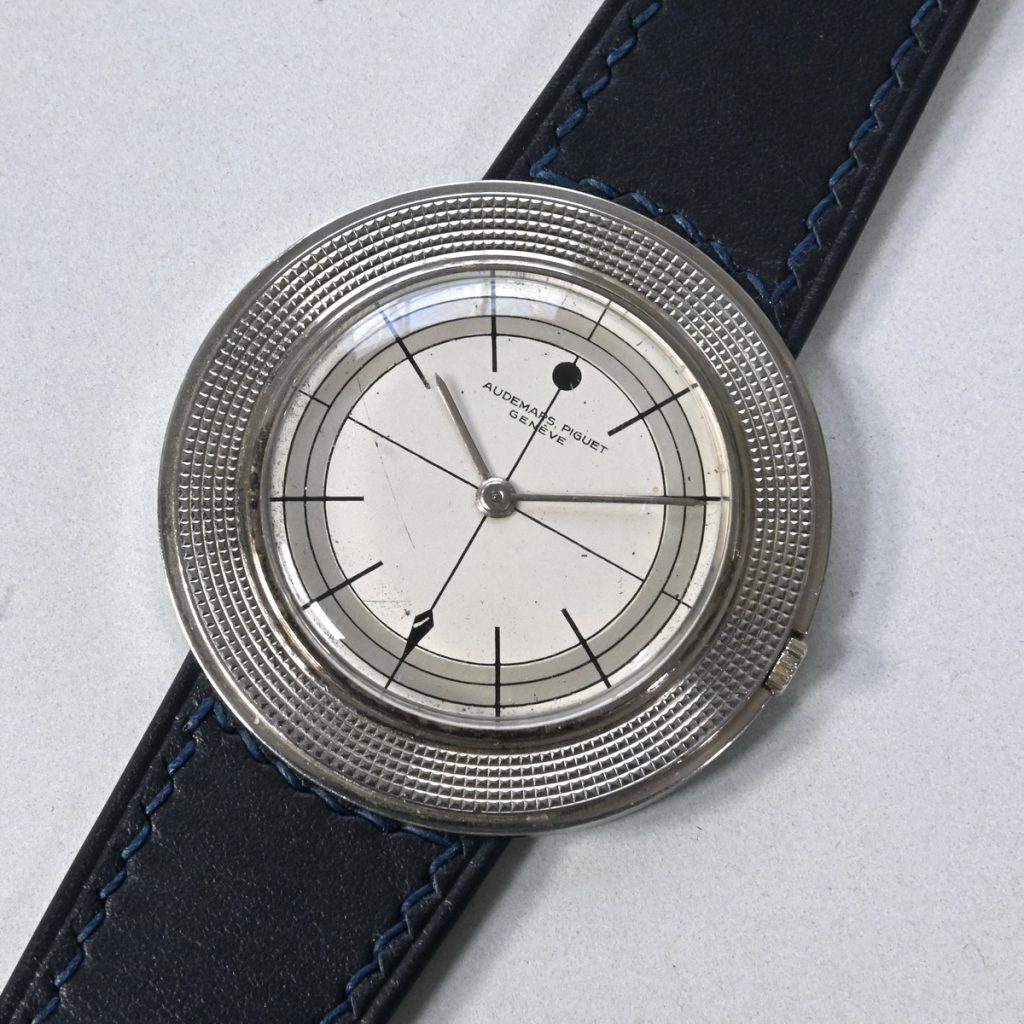Before the ascendancy of Instagram and Facebook, collectors often published “Year in Review” or “State of the Collection” postings. These were often exhaustive reviews of trends in the market, the development of their own collections, and similar topics. Nowadays, many collectors will simply click a couple of buttons on Instagram to post thumbnails of their most popular postings, with minimal commentary.
Rather than attempting any sort of summary of my collecting year (2023), I have selected five watches that capture some themes of my year. So we’ll follow the old rhyme, “Something old, Something new, Something borrowed, Something blue and a Sixpence in my shoe”.
Something Old
I have been collecting vintage Heuer chronographs for over 20 years, and people ask whether there are any models that I am still pursuing. The answer is a resounding “Yes”. There are the models that have escaped me, over the years, and there are models in my collection that I might want to “upgrade” if the right opportunity presents itself. There are also the models that have been in and out of my collection, with a new urge to try another one.
The Reference 2547 triple calendar chronograph has been on my “Most Wanted” list for at least a decade. Introduced in the early 1940s, this is the waterproof version of Heuer’s triple calendar chronograph (Reference 2543), with the Reference 2547 having round pushers and a screw-back case, rather than the flat pushers and snap-back on the standard model. The Reference 2547 uses the same basic case as the Reference 2447, except that the case-back is deeper to accommodate the thicker Valjoux 72C movement. My Instagram posting covering several of Heuer’s early 1940s chronographs is HERE.
Sometimes you wait for a bus for a long time, and then two of them come along, nose-to-tail. And so it was with the Reference 2547, with the one on the right coming along first, followed quickly by the one on the left. It’s interesting to compare the two dials, with the one on the left being a brighter white and the one on the right having a warmer “tabac” tone.
Another Heuer that moved from the “Wanted” list to the “Found” list was the Jarama, Reference 110.223, the version with the black bezel. This Jarama is shown in detail HERE.
Something New
I spend most of my time in the realm of vintage watches, but every once in a while I get interested in a new watch. For a while, I have been looking for a classic dress watch, with a gold case and a black dial. I would be happy with a three-hand watch or a chronograph, vintage or modern, but the watch has to embody “classic beauty”, with no “extra” ornamentation or complications. So no Speedmaster, no Navitimer, no Reverso . . . just a round gold case and a black dial.
This past summer, I found this Moser Endeavor “Mayu” Reference 321.503, which was new old stock in a dealer’s inventory from around 2010. The watch is yellow gold and measures 38.6 millimeters across the dial with a thickness of 9.6 millimeters, with an in-house manual movement.
I know relatively little about the history of the Moser brand. The first chapter seems to begin around 1826, when 25 year-old Heinrich Moser, born into a family of watchmakers in Schaffhausen, Switzerland, moved to St. Petersburg, Russia, to establish his watch business. With numerous twists and turns in the plot, this first iteration of H. Moser continued until it was a victim of the economic and quartz crises, of the 1970s.
The Moser brand was revived in 2002, with the Endeavor collection, including a uniquely-designed perpetual calendar watch, being introduced around 2005. This second version of H. Moser struggled, however and was on the verge of bankruptcy by 2012. The third chapter in the history of the Moser brand began in 2012, when the Meylan family took control of the company. Since that time, H. Moser has been very successful, with innovations such as its “Streamliner” models and the use of Vantablack for dials of certain models.
The Moser Endeavor “Mayu” that I purchased was part of the “second chapter” of the Moser brand, likely produced around 2010.
I wore this watch to our daughter’s wedding, in September 2023, and must say that it looked fine with a traditional tuxedo and bright white shirt. Here’s my Instagram posting covering the “Wedding Watches” and the other wedding watch, a Breitling Premier chronograph is also shown below.
Something Borrowed
No, it’s not a watch that I borrowed, but in creating his AC Signature Monaco, we might say that Abel Court “borrowed” a 1997 TAG Heuer Monaco (Reference CS2110) and customized it, to produce this fantastic version of the Monaco.
Of all the hundreds of watches that I have worn or written about over the last 20 years, the AC Signature Monaco proved to be the most admired of all. Everyone loves this watch, whether they are the novice asking, “What’s the cool looking watch?” or the vintage Heuer enthusiast who understands that Abel absolutely got it right with this tribute to the “Dark Lord” (circa 1977) and the other chronographs that Heuer created, using the black / orange color scheme.
The strength of the praise for the AC Signature Monaco was unprecedented; on the other side of the ledger, there was not a single negative comment about the watch. I’ll say that again, in this era when there will be some criticism about every watch that is introduced to the watch collecting community, no one had any negative comments about the AC Signature Monaco. Well done, Abel Court!!
A few days ago, I published a comprehensive posting covering this AC Signature Monaco, which included images of some of the favorite Heuer chronographs that seem to have inspired it. You can find that posting, and loads of images HERE.
Something Blue
Well, this category was easy!! This Philip Watch Caribbean 2000 was also on the “Most Wanted” list for a decade and it finally arrived in 2023.
Oddly it may sound, Philip Watch Company was an Italian brand, with its dive chronographs being produced by Jenny & Cie. S.A., a Swiss company. Jenny had the patent for a one-piece (monobloc) case, which incorporated three separate seals, to ensure that the chronograph would be waterproof to 1,000 meters. The “Caribbean Triple Safe” chronographs were the first chronographs with this depth rating.
At 50 mm across the dial and with a thickness of 17 mm, on the wrist, this Caribbean 2000 is unlike any other watch that I have ever owned. You feel that you are wearing a purpose-built diving instrument, rather than a device to simply tell the time, and you absolutely know that there is a watch on your wrist. The weight? 177 grams, on the (relatively short) bracelet. This Philip Watch Caribbean 2000 is powered by the Calibre 12 movement; there is a similar version powered by the Valjoux 72 movement.
Stay tuned, as I will be writing more about this very interesting and unusual watch!
and a Sixpence in My Shoe
Tradition has it that the bride would have a sixpence in her shoe, hoping for the prosperity of the new couple. Perhaps the sixpence was selected, because it was one of the smaller English coins, with a diameter of 19 millimeters, with the sixpence historically being silver.
With a diameter of 20.8 mm, and a thickness of 1.64 mm, we can look to the Audemars Piguet Calibre 2003 movement as a worthy substitute for the English sixpence. Even housed in the Reference 5093 “Disco Volante” case (case is 3 mm thick and the crystal adds another 3 mm), it might not be all that uncomfortable to have this watch in my shoe, and it’s certainly more feasible than any of the chronographs that I have been collecting for the past 20 years.
My interest in the “ultra thin” watches of the 1950s and 60s was sparked by my conversations with Sylvain Berneron, who is creating the Berneron Mirage. (My in-dpeth interview with Sylvain is HERE.) The Mirage movement will be 2.3 millimeters thick and the watch itself will be 7.0 millimeters thick. To Sylvain, “thinness” is itself a complication, and this Audemars Piguet Reference 5093 is my very first ultra-thin watch.
The standard taxonomy puts “watches” and “jewelry” into separate categories. In simplest terms, a “watch” is a timepiece worn on the wrist or carried in a pocket, while pieces of “jewelry” are ornamental items worn for adornment. Of course, it gets confusing when we consider the brands that made “pieces of jewelry that tell the time”, for example many vintage models from Piaget, Cartier and Boucheron. This Audemars Piguet “Disco Volante”, and similar models made by Patek Philippe, Jaeger-LeCoultre and Vacheron Constantin, show us that there have been periods when even the most traditional watch brands occasionally tried their hands in the world of jewelry.
Most of the time over the last 20 years, I have been wearing the usual tool watches — mainly chronographs and dive watches. While almost all watches end up having some aspect of ornamentation or adornment, most of the watches in my collection are clearly more “tools” than “jewels”.
This Audemars Piguet “Disco Volante” is the first watch in my collection in which the “jewelry” element may have primacy over the timekeeping function. The Clous de Paris (nails of Paris) pattern on the white gold case is mesmerizing, with the construction of the case showing true craftsmanship. Three screws hold the case together; three different screws hold each piece of the strap.
After wearing this watch from time to time over the last few weeks, I can report that “the jury is out” on this new category. This watch is a beautiful object, but wearing it and seeing it on my wrist is an entirely new experience. It’s more of a medallion on a thin strap than a traditional watch, and — like the Phillip Watch Caribbean 2000 — it has an different look and feel from anything else in my collection. We’ll give it some time!
. . . to be continued in 2024!
Grail Watch Reference covers the Audemars Piguet Calibre 2003 HERE.
Excuse Me Sir, but Is There a Theme Here?
Once upon a time, I recall suggesting that any collector should be able to describe the theme of their collection in a simple statement. For example, “I collect military-issued dive and pilots watches from the 1950s and 60s” or “I collect dress watches from the 1950s and 60s, focusing on those with stone dials and integrated gold bracelets.”
In the early years, my theme has been relatively straightforward — “I collect vintage Heuer chronographs, dashboard timers and stopwatches, along with other vintage chronographs and tool watches.” In recent years, I have definitely expanded the “mission statement” to include a broader variety of watches, as I have added some neo-vintage and modern watches to my collection. As of January 7, 2024, I will admit to having some interest in the ultra-thin and shaped dress watches, but for the moment, I am more interested in learning about these watches than actually collecting them.
A few days ago, a friend asked me “what’s next?” in my collecting journey. I offered usual response, that I expect to be interested whatever I might find around the next corner, but that it’s difficult to predict what that will turn out to be. In recent years, I have found myself deeply interested in Heuer’s Landeron 13 chronographs from the 1930s and 40s, yacht timers from the 1950s and 60s, black-coated chronographs of the 1970s, titanium chronographs of the 1980s, and TAG Heuer Carreras from the 1990s and early 2000s. Each of these categories has proven to be interesting to study and collect.
As of January 2024, I remain deeply interested in the vintage Heuer chronographs, along with several other brands of vintage chronographs and “tool” watches, but I suddenly find myself interested in the jewelry-like dress watches of the 1950s and 60s. Twenty years of collecting have taught me that here is a difference between being interested in the history of a specific category of watches and wanting to actually wear and collect them. In the end, I expect that my current watch-collecting “mission statement” remains about the same — I collect vintage watches and chronographs (focusing on the Heuer brand), study their history and write about them, and wear whatever watches are in my collection.
Wishing everyone an enjoyable 2024, in their watch collecting journey.
